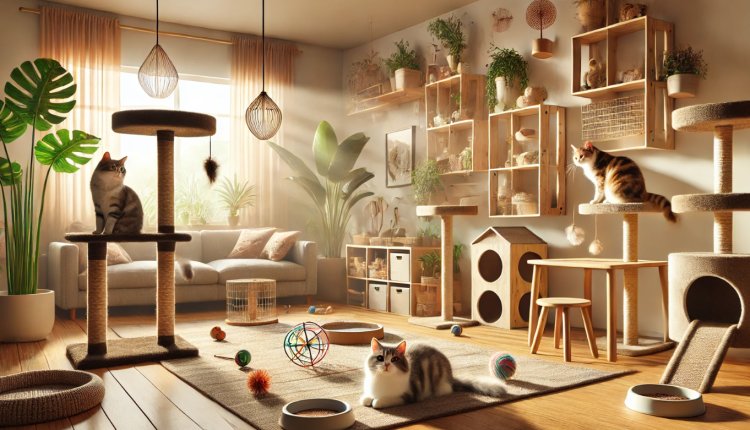The Importance of Environmental Enrichment for Indoor Cats
Indoor cats often lead lives of comfort and safety, shielded from the dangers of the outside world. However, this protection can come at a cost: a lack of stimulation and engagement that the outdoor environment naturally provides. Environmental enrichment is essential for indoor cats to maintain their physical health and mental well-being. This article explores the significance of environmental enrichment, its benefits, and practical ways to implement it in your home.
Understanding Environmental Enrichment
Environmental enrichment refers to the process of enhancing an animal’s surroundings to stimulate natural behaviors and promote psychological health. For indoor cats, this means creating an environment that encourages activities such as hunting, climbing, scratching, and exploring. By replicating aspects of the outdoor world, we can provide our feline companions with opportunities to express their innate behaviors, leading to a more fulfilling and healthier life.
Benefits of Environmental Enrichment
Physical Health
Engaging in regular physical activity helps prevent obesity, a common issue among indoor cats. Obesity can lead to various health problems, including diabetes, joint issues, and heart disease. By encouraging movement through enrichment activities, cats can maintain a healthy weight and improve their overall physical condition.
Mental Stimulation
A lack of mental stimulation can result in boredom and stress, leading to behavioral problems such as excessive grooming, aggression, or depression. Environmental enrichment provides mental challenges that keep cats engaged, reducing the likelihood of these issues arising.
Behavioral Expression
Cats have natural instincts to hunt, scratch, and climb. Providing outlets for these behaviors within the home allows cats to express themselves in appropriate ways, preventing the development of undesirable behaviors like furniture scratching or nocturnal restlessness.
Implementing Environmental Enrichment
Interactive Play
Engaging your cat in interactive play sessions mimics the hunting experience and provides both physical exercise and mental stimulation. Toys that resemble prey, such as feather wands or laser pointers, can be used to encourage stalking and pouncing behaviors. Aim for at least two play sessions per day, each lasting around 15 minutes.
Vertical Spaces
Cats enjoy observing their environment from elevated positions. Installing cat trees, shelves, or window perches allows them to climb and survey their territory, satisfying their climbing instincts and providing a sense of security.
Scratching Posts
Scratching is a natural behavior that helps cats mark their territory, stretch their muscles, and maintain claw health. Providing various scratching posts or pads made of different materials can deter cats from scratching furniture and fulfill this instinctual need.
Puzzle Feeders
In the wild, cats spend a significant portion of their time hunting for food. Puzzle feeders replicate this challenge by requiring cats to solve problems to access their meals, promoting mental stimulation and slowing down rapid eaters.
Sensory Stimulation
Introducing new scents, sounds, and textures can enrich a cat’s environment. Cat-safe plants like catnip or silver vine, as well as toys with different textures, can provide novel experiences. Playing nature sounds or leaving a window open (with a secure screen) can also offer auditory stimulation.
Social Interaction
Regular interaction with humans or other pets can prevent loneliness and boredom. Gentle petting, talking, and grooming sessions strengthen the bond between you and your cat, contributing to their emotional well-being.
Rotating Toys and Activities
To prevent habituation and maintain interest, regularly rotate toys and introduce new activities. This keeps the environment dynamic and engaging, encouraging continuous exploration and play.
Monitoring and Adjusting Enrichment Strategies
Observe your cat’s responses to different enrichment activities and adjust accordingly. Each cat has unique preferences, so tailoring the environment to suit their individual needs ensures maximum benefit.
Conclusion
Environmental enrichment is vital for the health and happiness of indoor cats. By providing opportunities for physical exercise, mental stimulation, and natural behavioral expression, we can enhance their quality of life and prevent potential health and behavioral issues. Implementing a variety of enrichment strategies tailored to your cat’s preferences will create a stimulating and fulfilling indoor environment.

